Electrical outlets are usually an afterthought when designing or remodeling a kitchen, and while they’re necessary and functional, they can be a real eyesore against your backsplash. Fortunately, it’s possible to disguise them so they blend in seamlessly with your design. Keep reading to learn eight clever ways to hide your kitchen outlets!
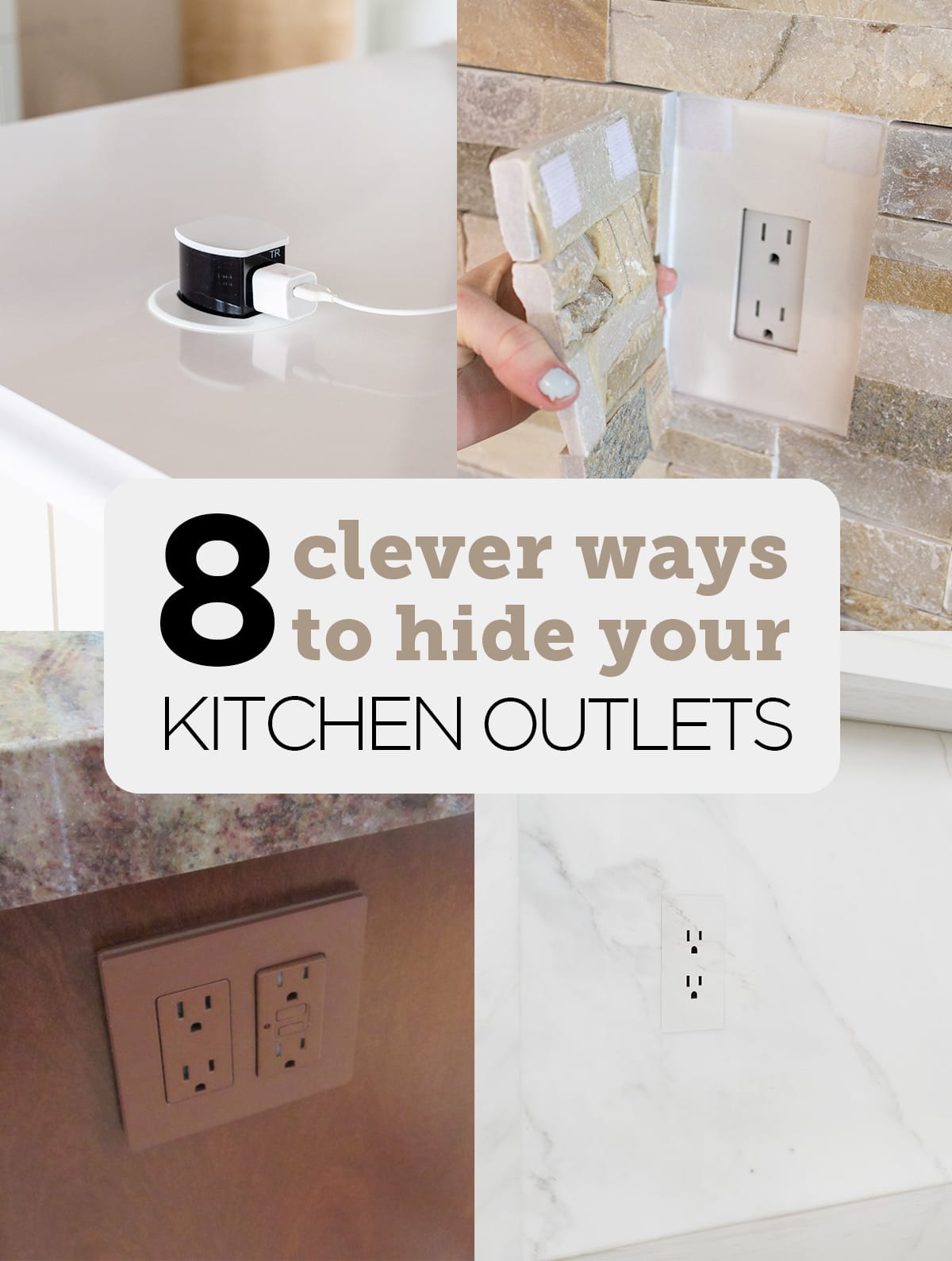
Jump to:
1. Paintable Screwless Wall Plates
This is hands down the easiest and most affordable way to make your existing outlets blend in with its surroundings. We’ve been upgrading our own home with screwless wall plates for a cleaner, elegant look.
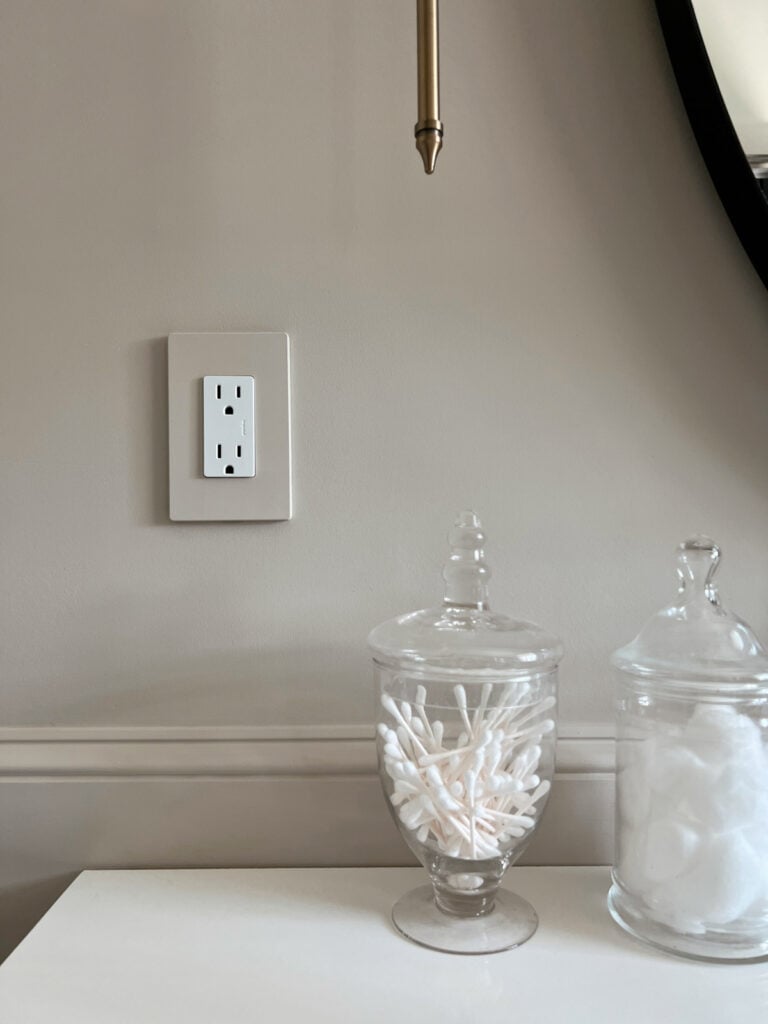
If your walls aren’t white, you can easily paint the covers (covers only, not the actual receptacles!) or buy single-piece full covers. Here are my best tips for a lasting finish:
- Start with a matte (non-glossy) cover
- Clean thoroughly and lightly sand between coats
- Use a good oil-based spray primer
- Use a quality paint
- Finish with a clear matte sealer for extra protection
You can also find covers specifically labeled “paintable” or wood covers that can be painted or stained to match the wall.
2. Colored Receptacles
Finally, manufacturers are realizing that consumers want more choices beyond the standard white, beige and black receptacles.
Today you can find a wide range of colors online from forward-thinking companies like Lutron. From Taupe, to Brushed Nickel and Dark Bronze, there are plenty of options that will blend in more seamlessly to your wall, cabinet or backsplash.
3. Under Cabinet Power Strip
If you are remodeling or designing a kitchen, consider installing power strips underneath your upper cabinets.
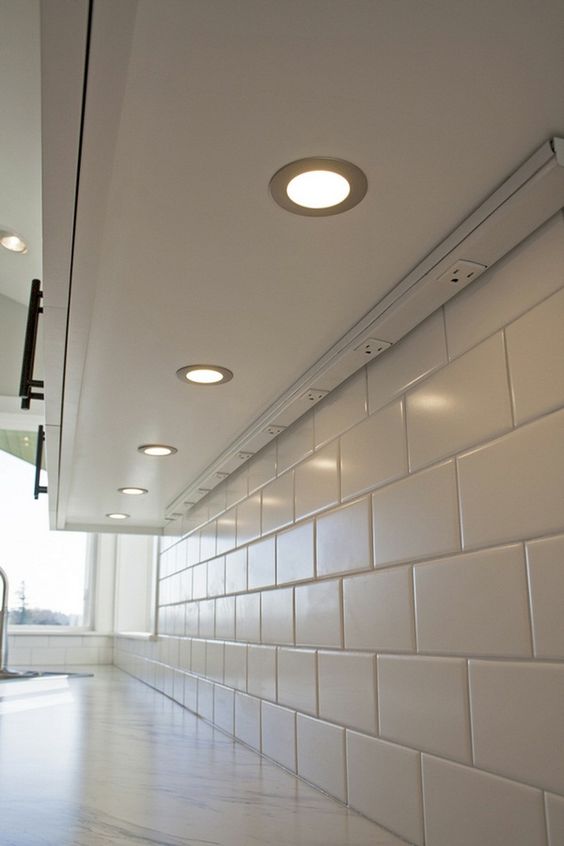
This is one of the most convenient and affordable ways to eliminate visible outlets in your walls or countertops (I would have gone this route if we had upper cabinets in our kitchen!)
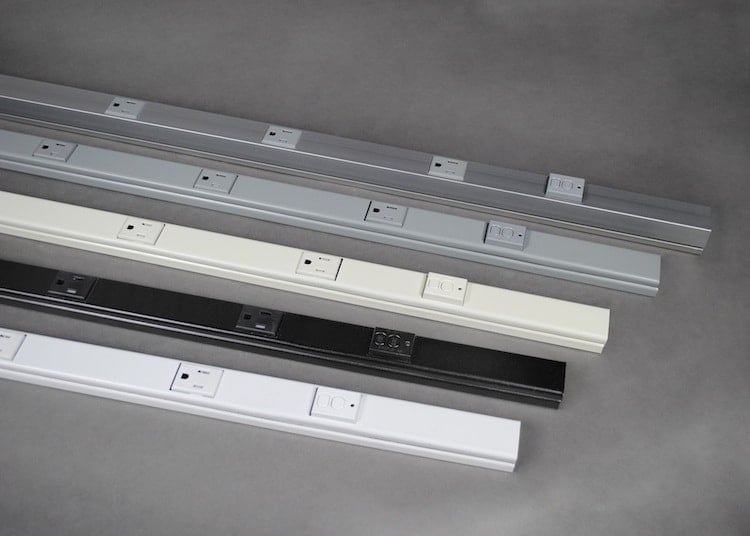
LeGrand Plugmold is one of the most well known code-compliant cabinet power strips. They’ve also released a modular track version with USB ports and phone/tablet cradles. MonoSystems is another, budget-friendly alternative.
4. Pop-up Outlets
No upper cabinets to hide a power strip? No problem! Keep your backsplash receptacle-free with countertop pop-up outlets that are hidden when not in use. This is the route we went in our Hacienda Hideaway kitchen to avoid drilling into our backsplash:
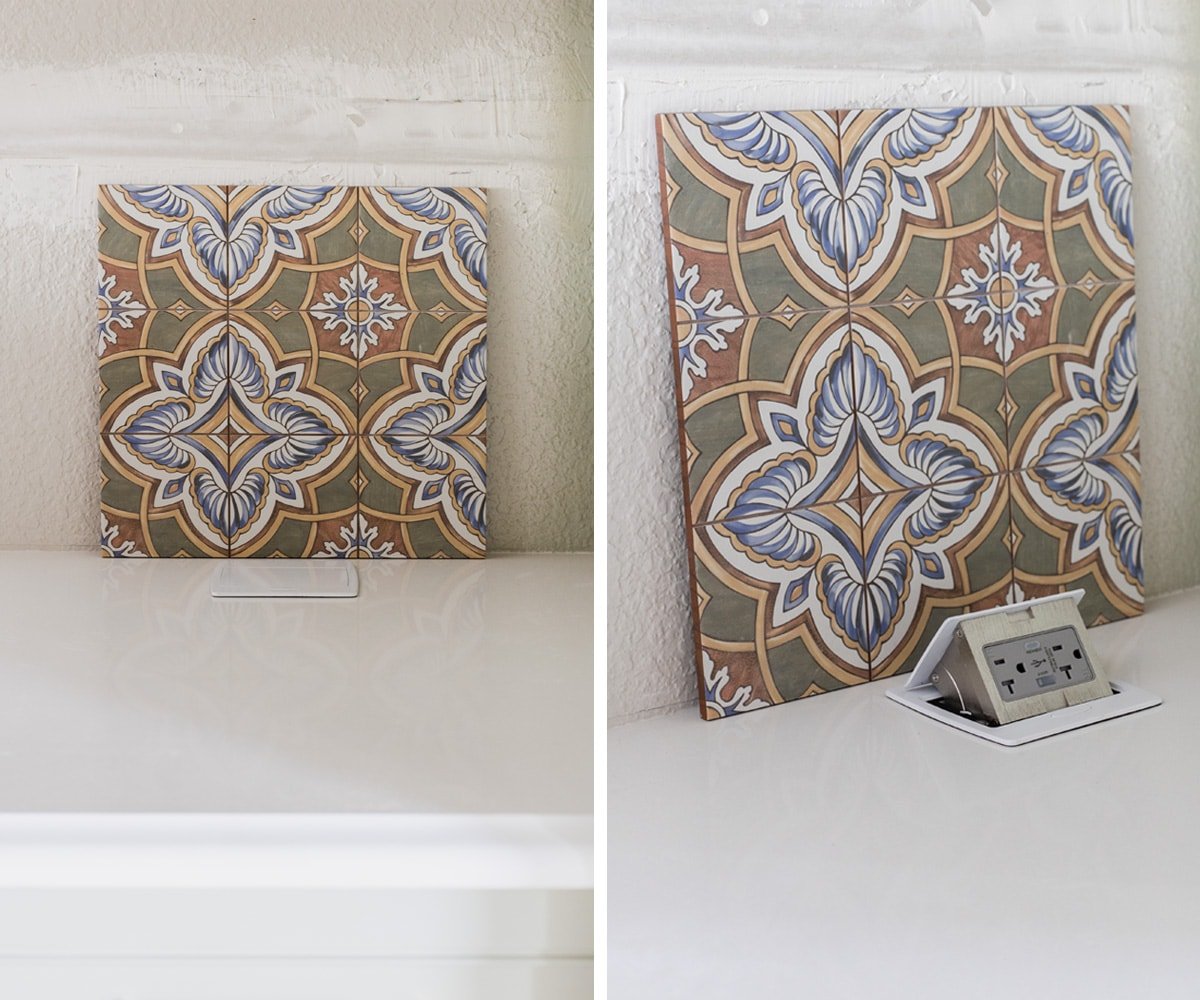
There are a ton of different configurations, shapes and finishes to fit any need. We opted for these white pop ups along the back wall, and a round pop up in the island. You can also find plenty more budget options on Amazon.
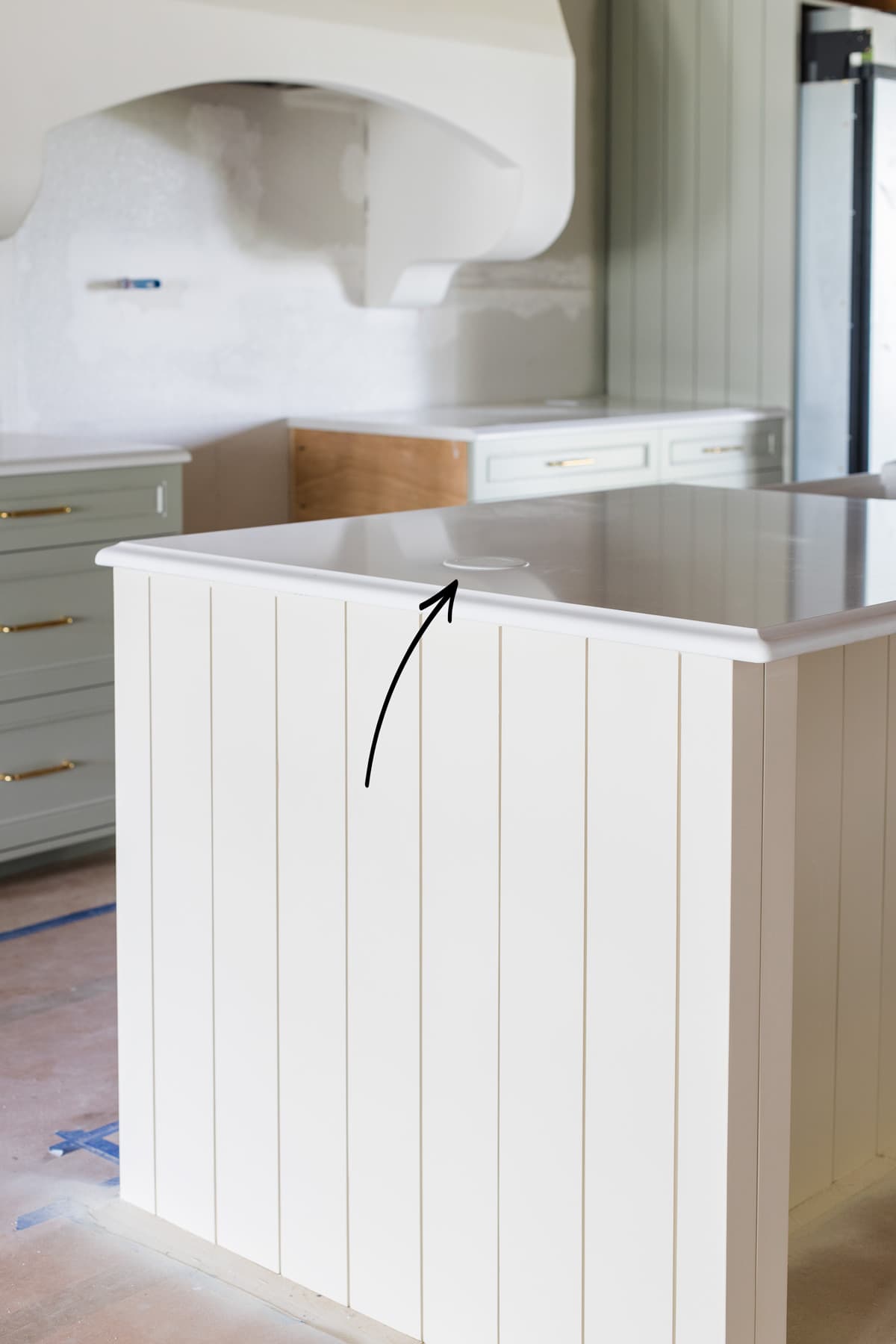
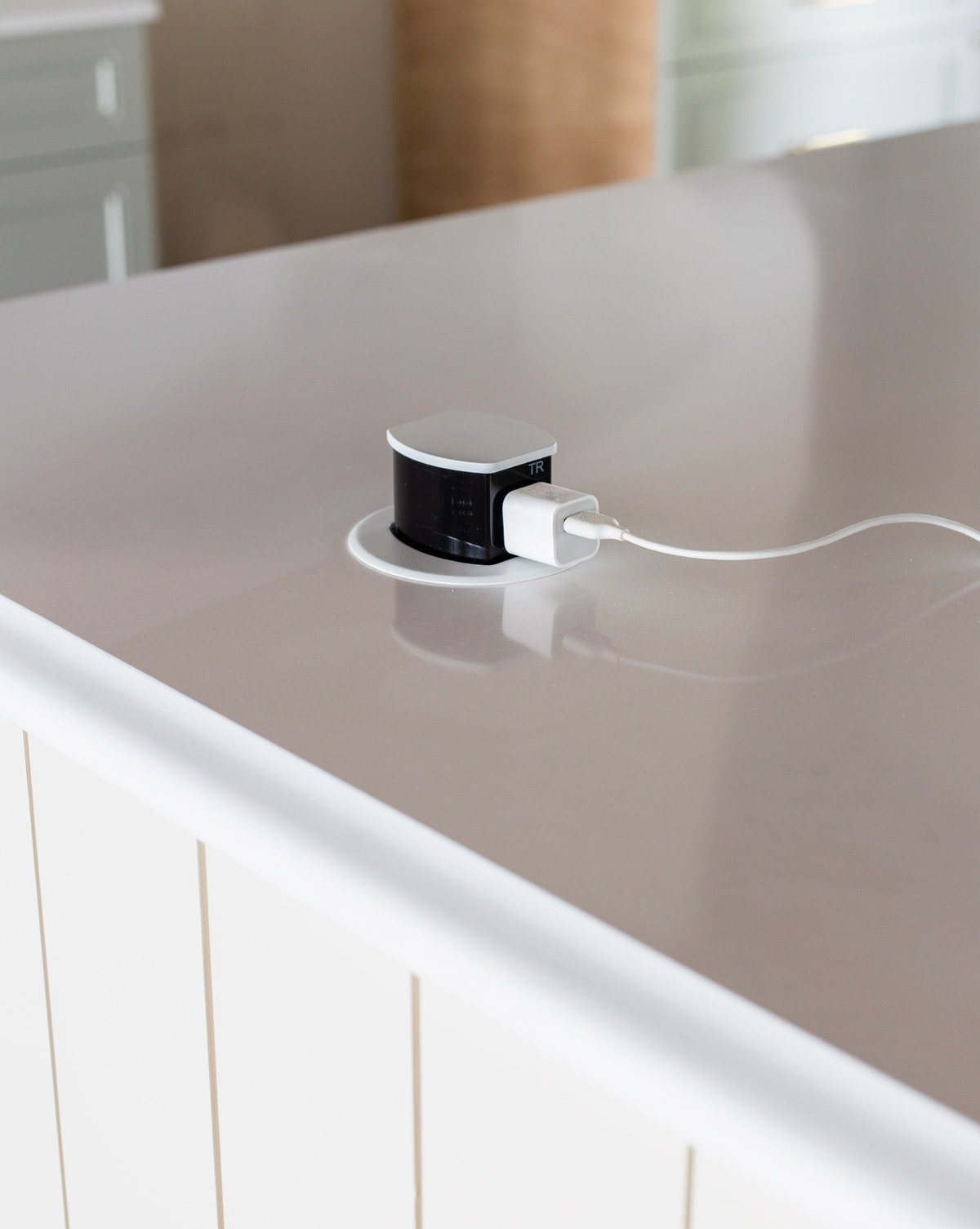
If you want to take it a step further, check out S-Box sockets. These are mounted underneath a section of countertop, for a nearly invisible installation:
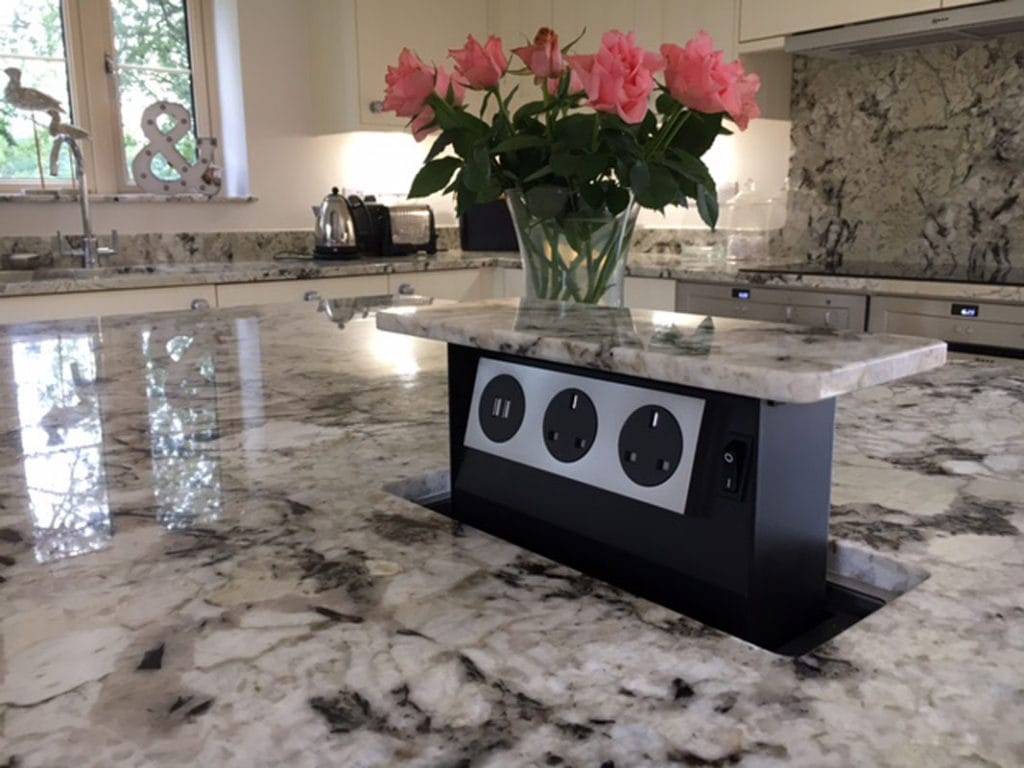
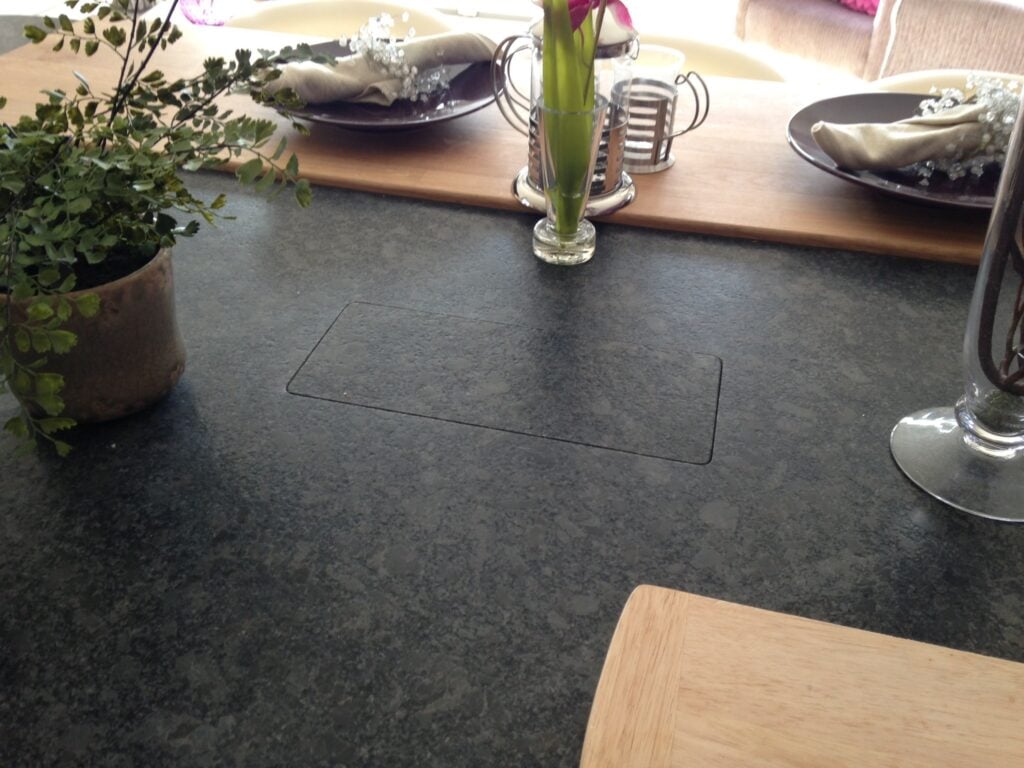
If you aren’t sold on the idea of drilling into your counters, wall pop-out outlets are another great option (these can also be installed on the sides of cabinetry). Legrand’s adorne pop-up outlets allow you to power up to three devices at the same time:
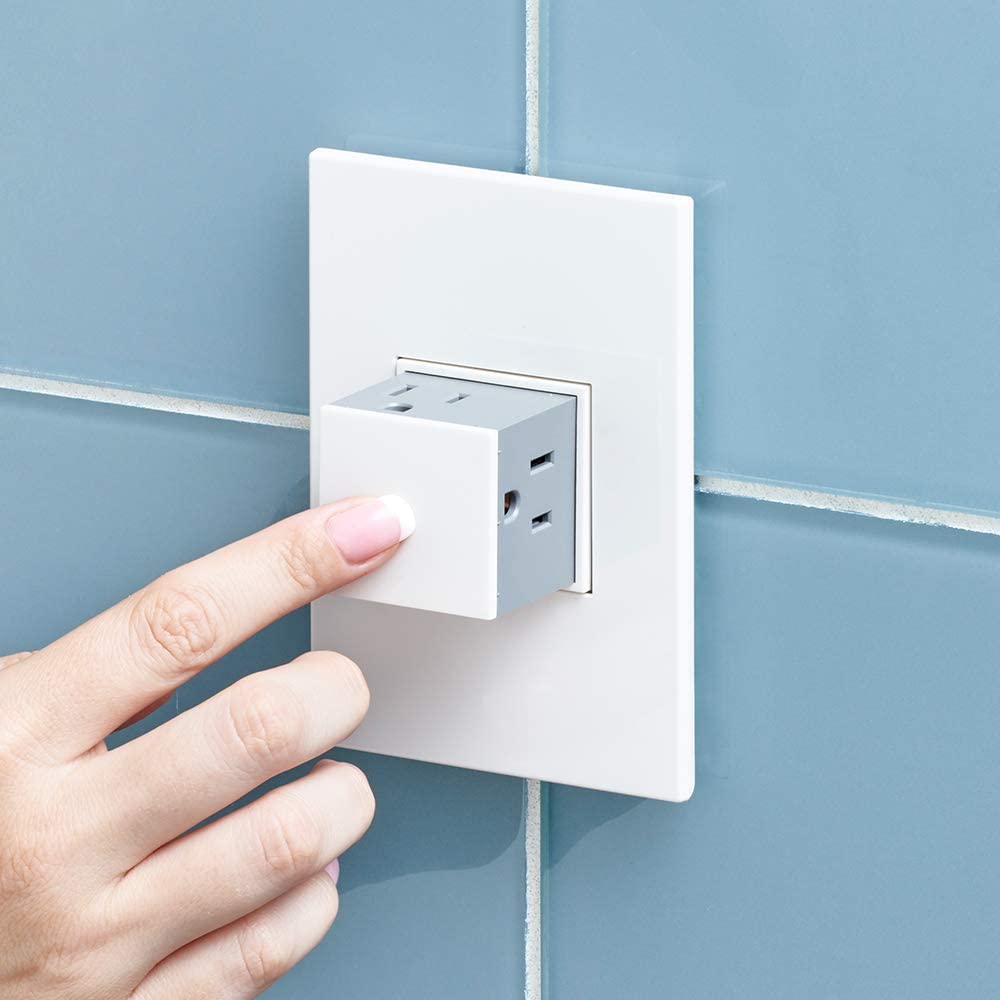
5. Removable tile cover plates
Way back in 2014 when we were remodeling our Mountain Farmhouse kitchen, we came up with a pretty ingenious solution (if I do say so myself) to hide an unsightly outlet behind a piece of stone on a stacked stone wall.
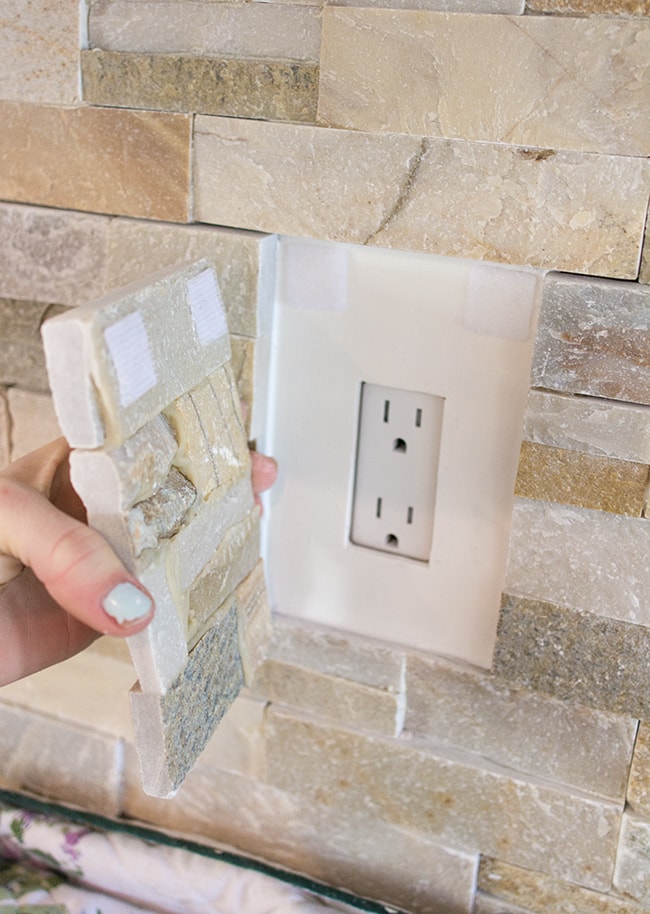
It was quite the makeshift operation held on by velcro, but it did the trick. Today, there are companies like Simplicover offering a more refined version of this concept: cover plates designed to hold your tile.
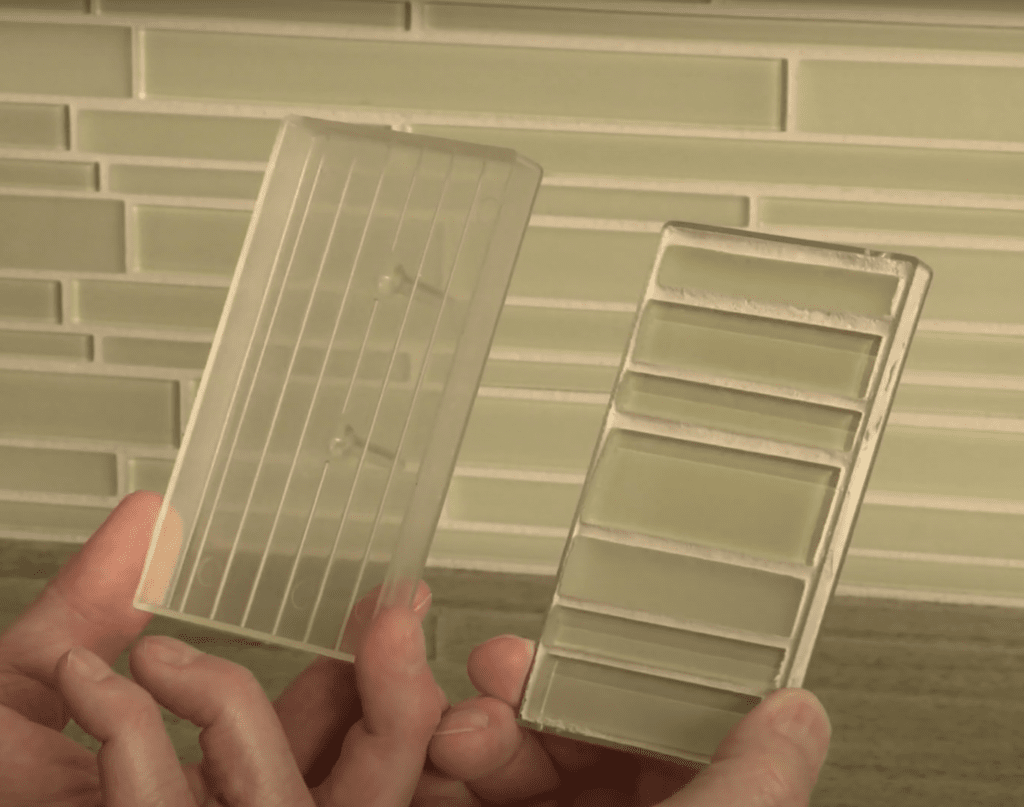
The plate simply inserts into the receptacle to cover it when not in use. It does protrude from the wall so it isn’t completely seamless, but this is a great budget option if you have an existing outlet that stands out against a tiled wall.
6. Specialty Finish Faceplates
Perhaps the most elegant solution on this list, customized and faux-finish faceplates are becoming increasingly popular in high-level luxury design.
Cutting edge companies like Trufig offer a flush-mount installation system that can accept a faux finish to blend in with its surroundings.
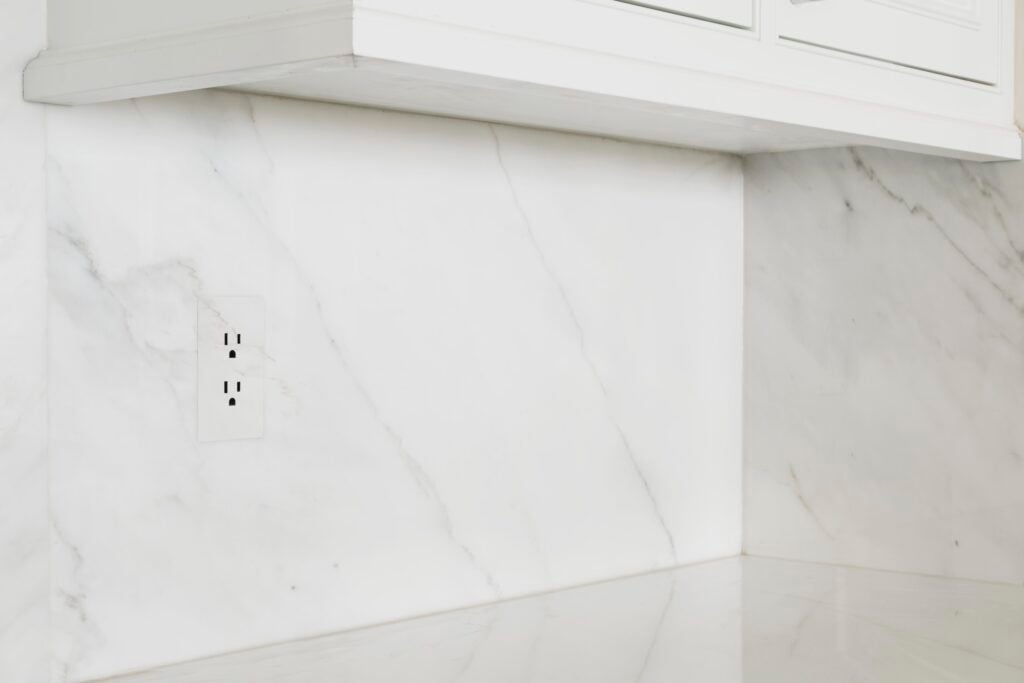
Trufig outlets are a favorite of top designer Marie Flanigan Interiors, as seen in this Instagram reel.
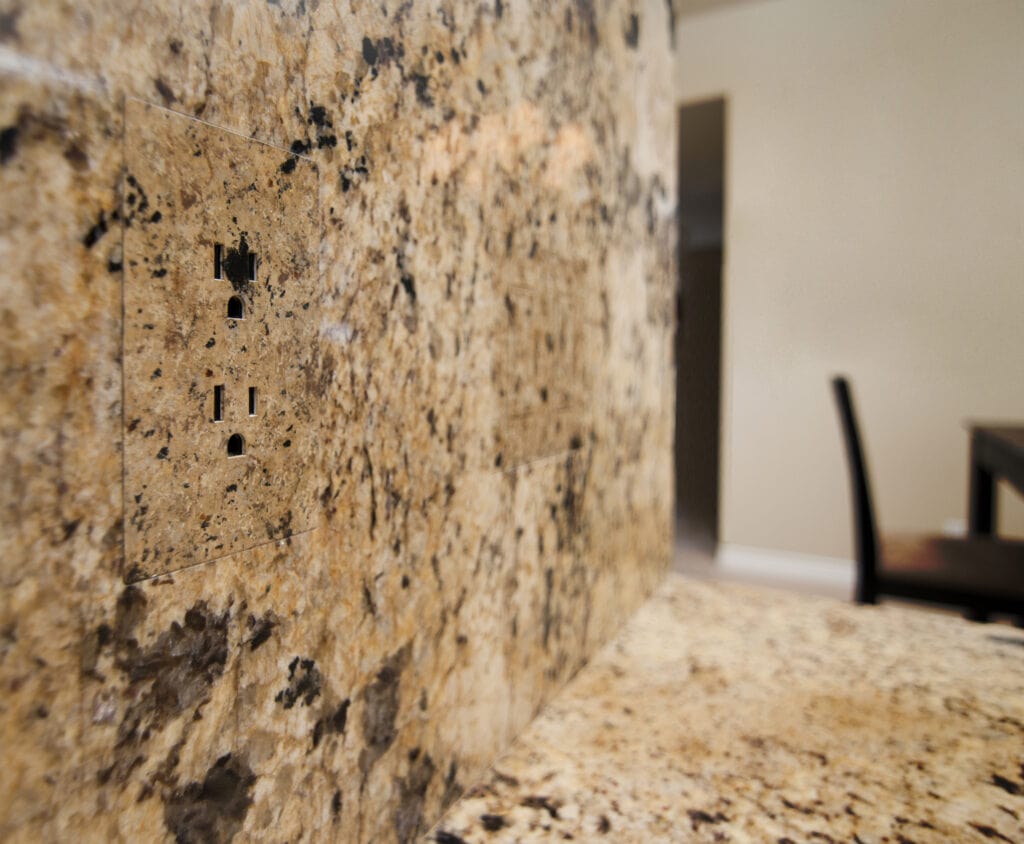
Not surprisingly, this option comes at a cost (around $300/outlet) and must be installed by a professional, before drywall goes in. I did some digging and was found another company, DesignMod, offering a similar flush-mount system at a very reasonable price of $13/plate.
For those looking to make your receptacles a focal point rather than hide them, you can’t beat the style and elegance of designer-favorite Forbes & Lomax.
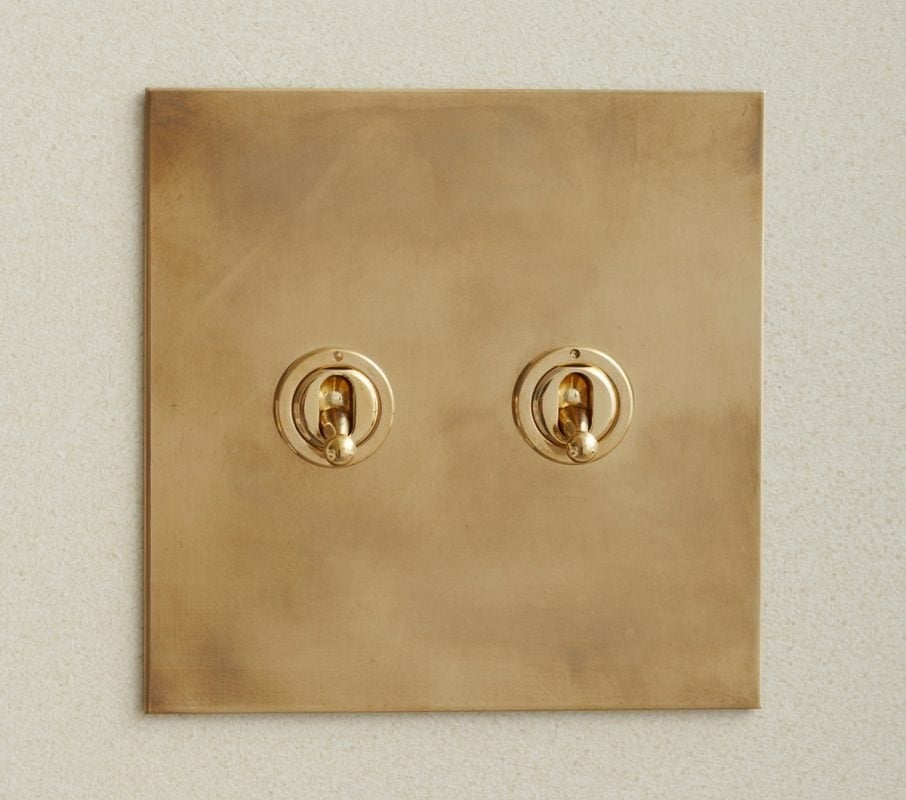
The British-based company is known for their unique toggle switches and elegant finishes such as unlacquered brass, verdegris, and transparent.
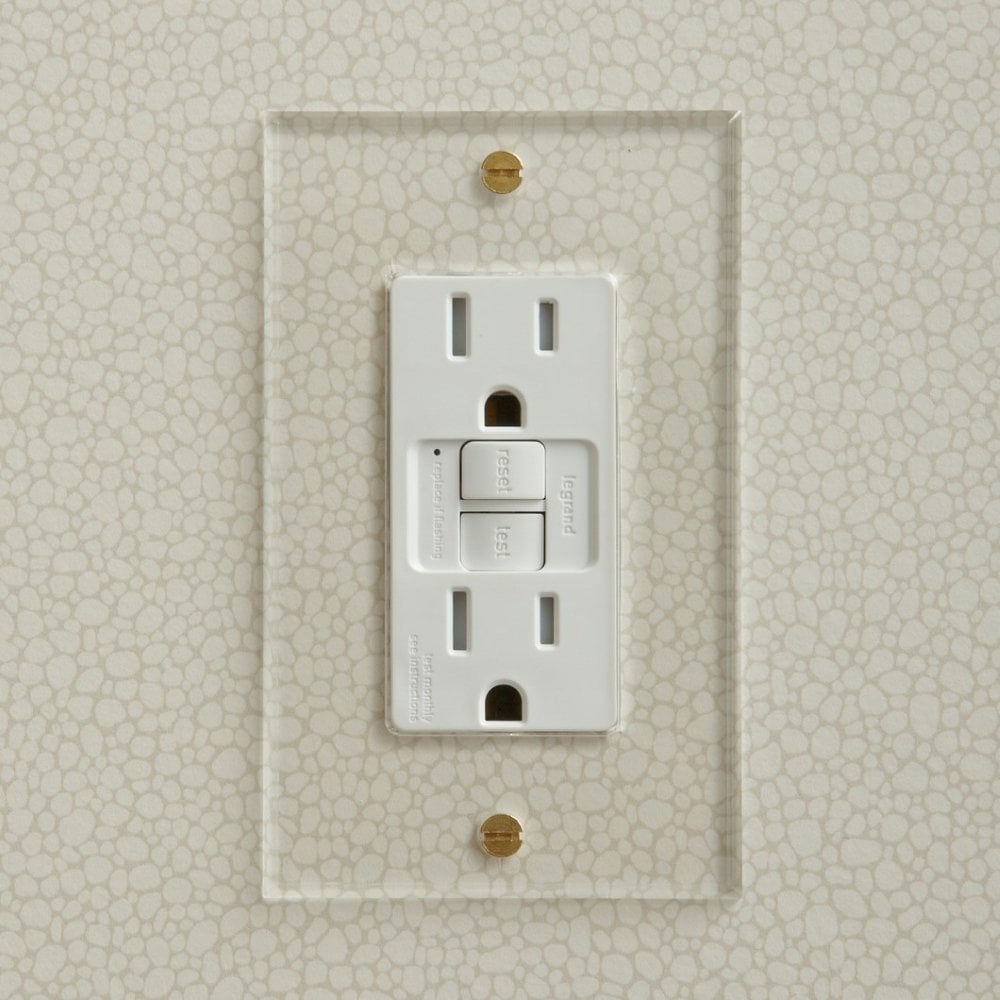
Of course, such luxury comes at a price—expect to pay $100+ for a single gang outlet if you want the best of the best.
7. Flush Mount Self-Contained Receptacles
Here’s another flush-mount system that eliminates the need for a faceplate: self-contained receptacles:
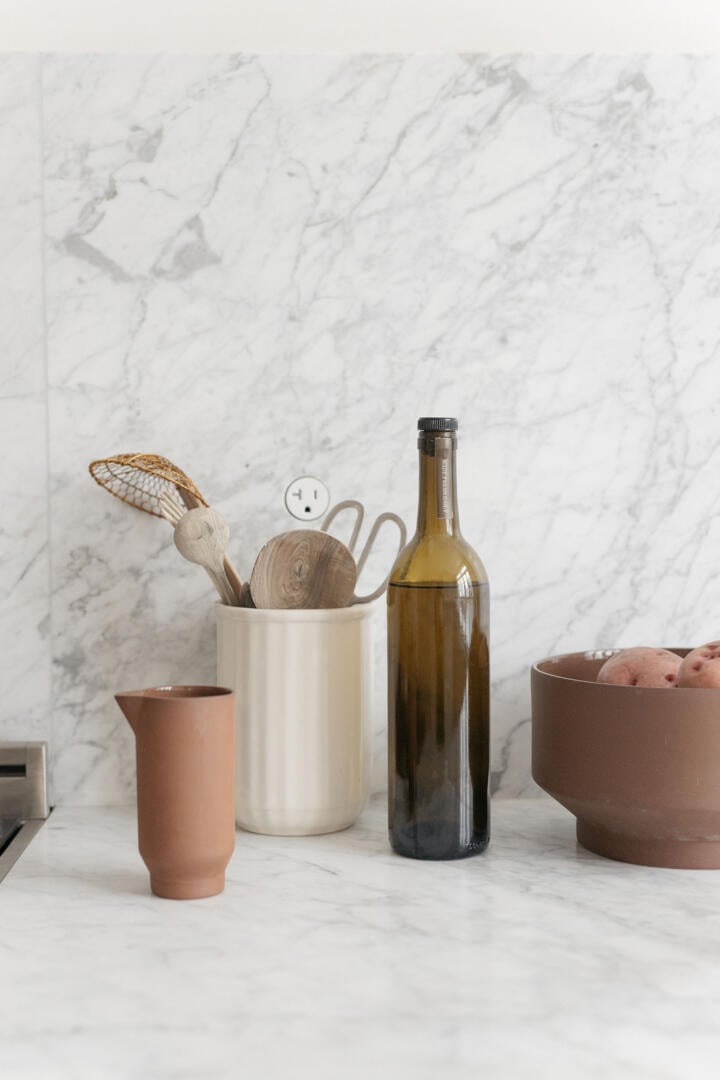
Bocci’s 22 system is most famously known for this minimalist design, and similar to Trufig outlets, they must be installed before drywall.
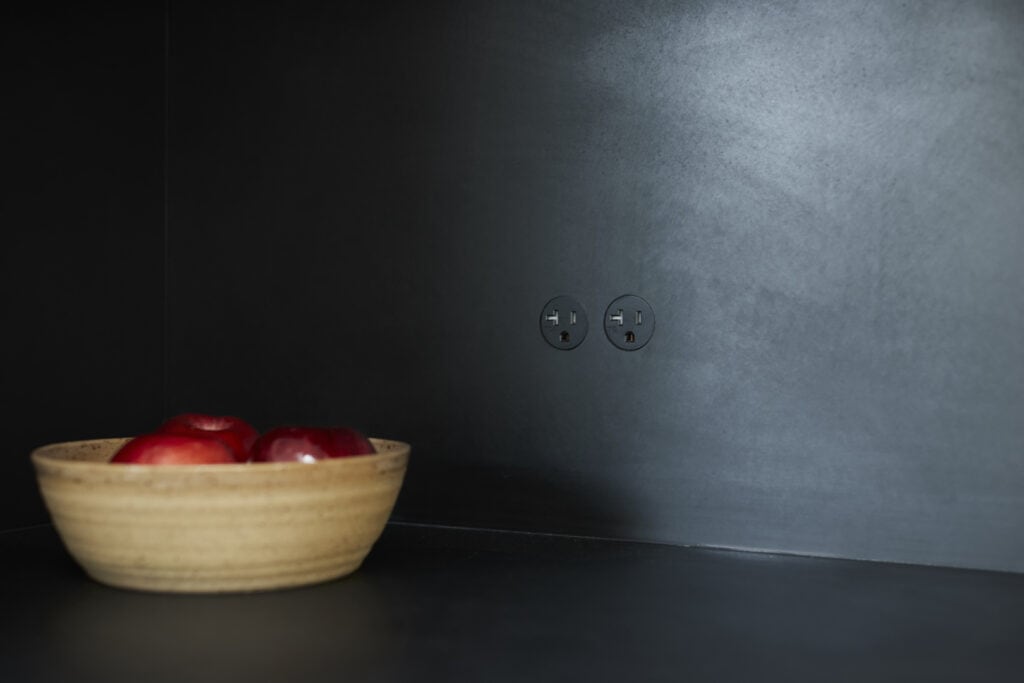
The price point is also quite steep at around $200-$300/receptacle, but you skip the step of faceplate finishing.
Fortunately, a company called Sillites sells a similar product for only $25. It’s available in a few different colors and includes a cap to hide when not in use (it’s only available in a 15amp though, so make sure to check your local code requirements!)
8. Charging station drawer
Plug-in power strips can’t replace your hardwired kitchen outlets by code, but it’s an easy way to add an additional power source and keep your counters free of electronic devices.
Docking Drawer is perhaps the most well-known system with several code-compliant configurations, although it’s the priciest option starting in the mid-$200’s. Recessed furniture power strips are a more cost-effective solution for DIYers, and can be found for under $20 on Amazon.
To summarize, here are the key takeaways:
How to hide existing electrical outlets in the kitchen
- Painted or color matched wall plates
- Color matched receptacles
- Clear or faux finish decorative wall plates
- Removable tile outlet cover
Outlet options to consider when designing/remodeling
- Countertop or wall pop-ups
- Under cabinet outlet strip
- Flush-mount or self-contained receptacles
- Charging station drawer
- Mount outlets horizontally if wall tile is horizontal (ie subway tile)
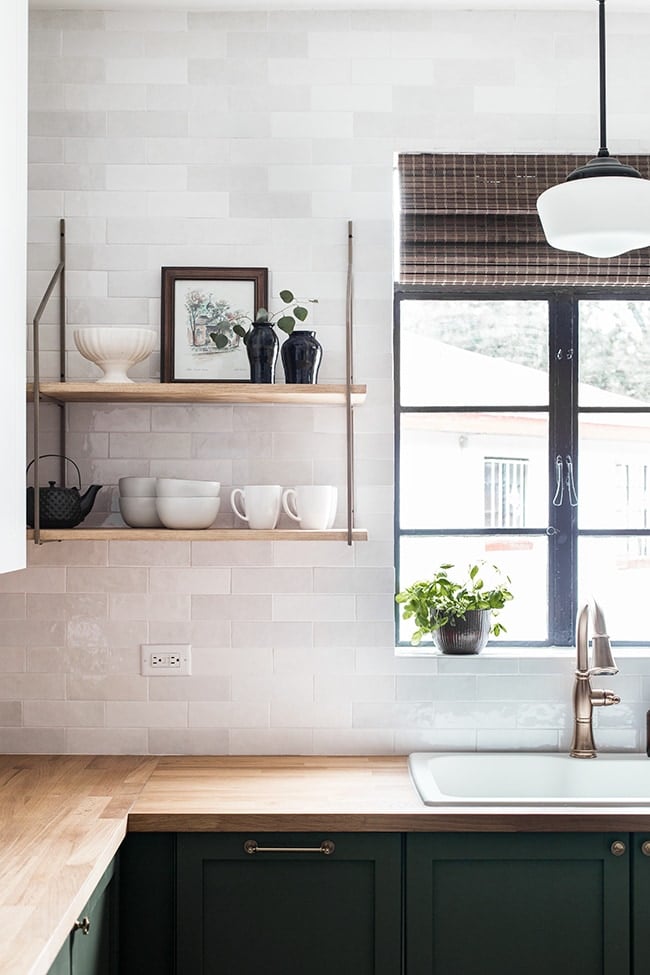
Here’s a trade secret: if you see a gorgeous kitchen on Instagram or Pinterest with no outlets to be found, chances are they were removed via Photoshop. This is a common practice for designers to remove distractions from their work. Now you know 😉
Disclaimer: While these suggestions can be used under NEC regulations, always make sure to reference your local building codes or consult with an electrician before doing any electrical work.
Have you found any other ways to hide or disguise your kitchen outlets? Let me know in the comments!


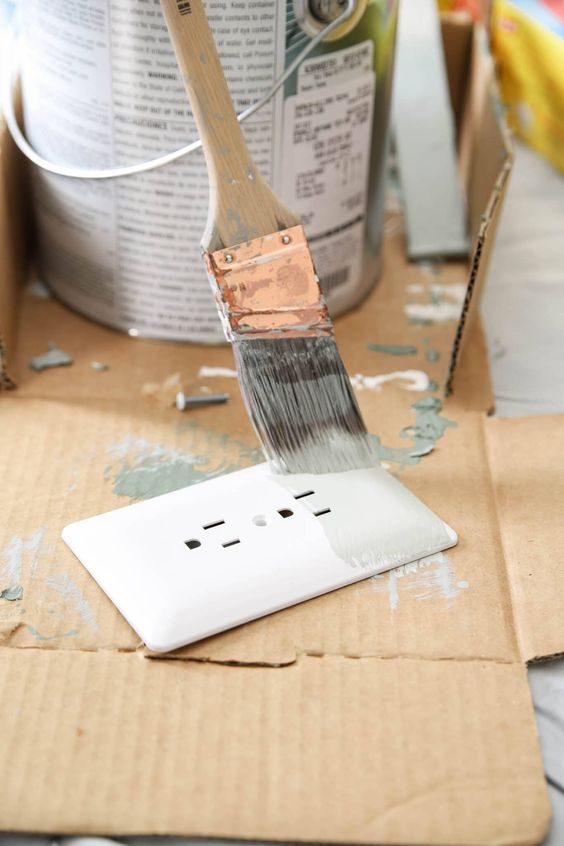
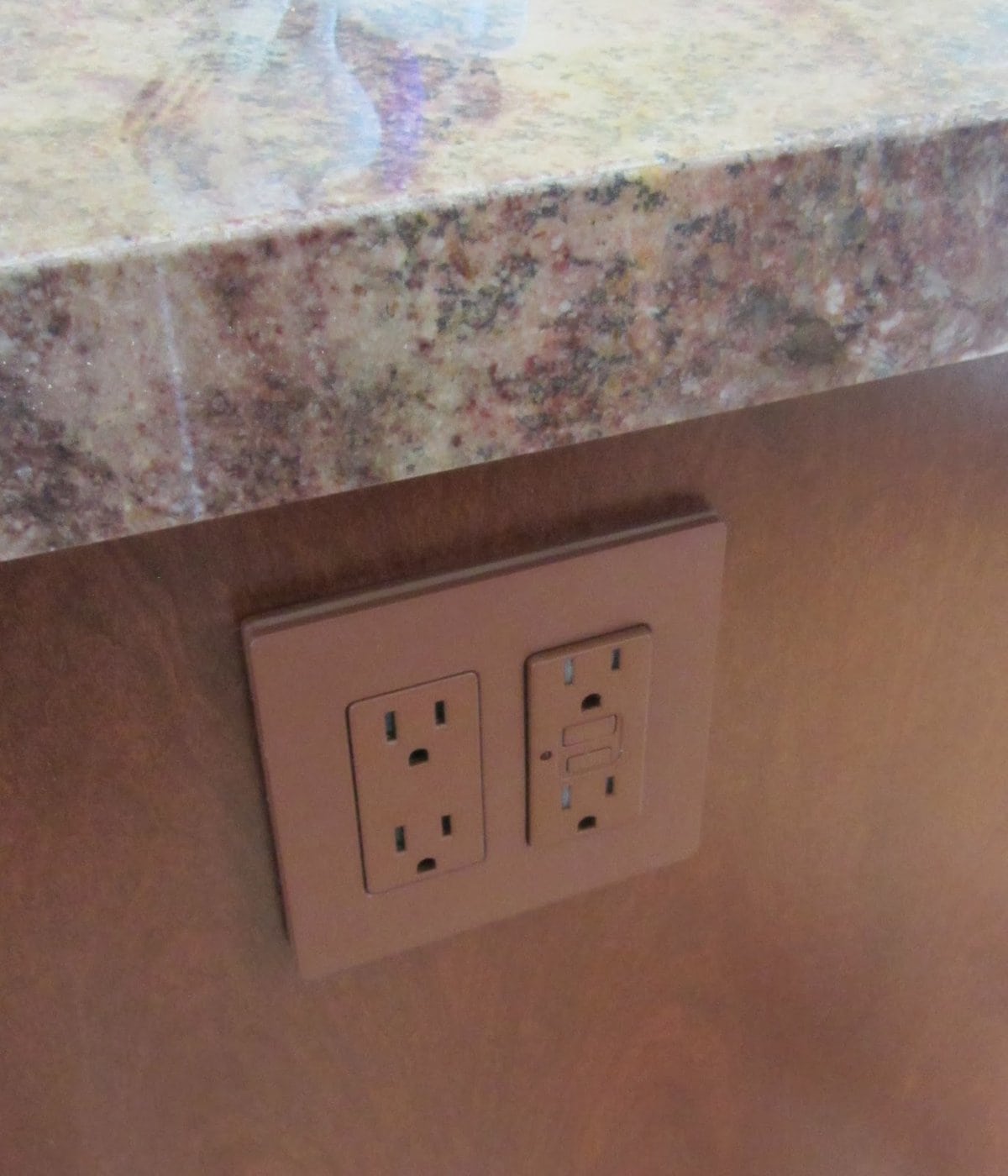
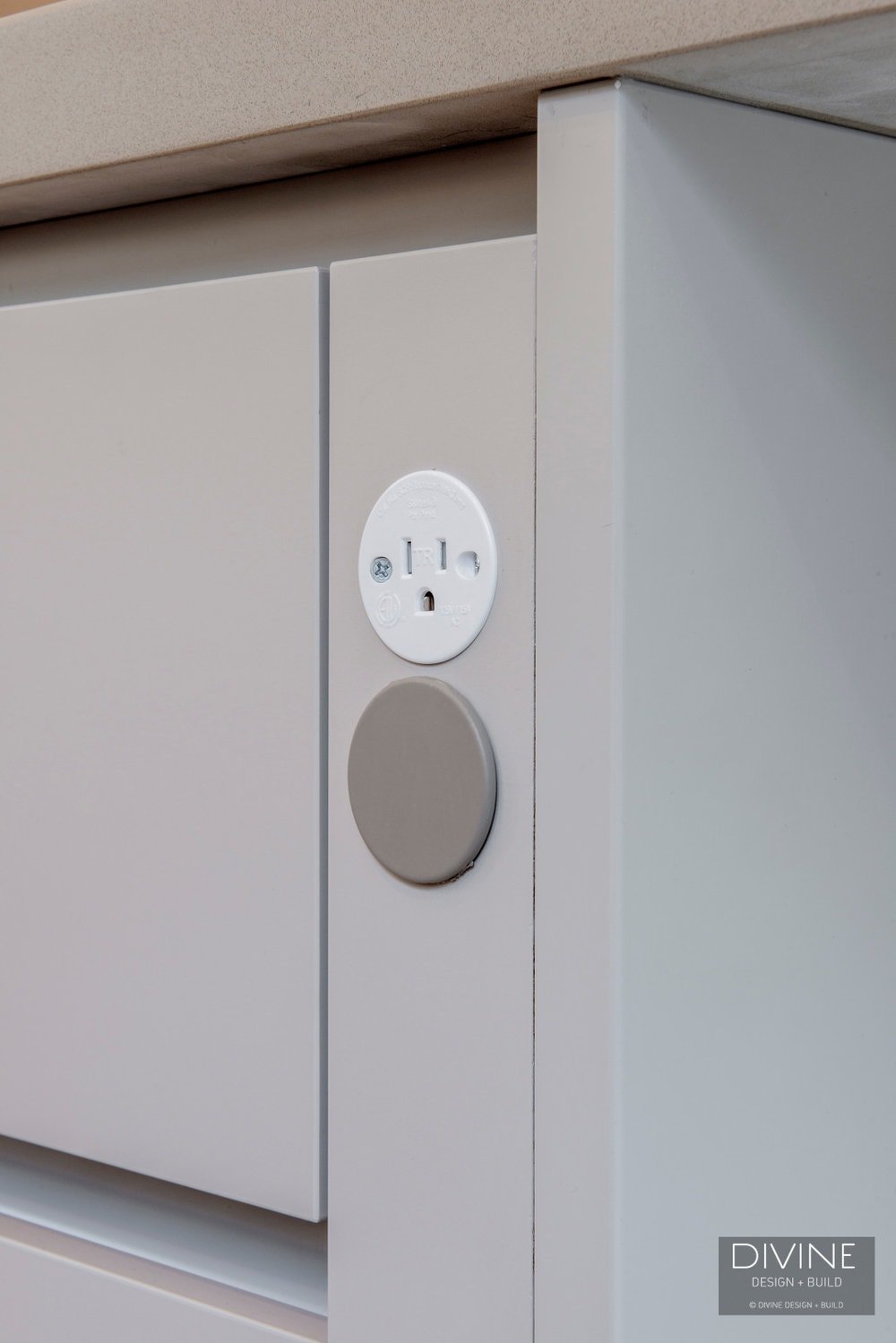
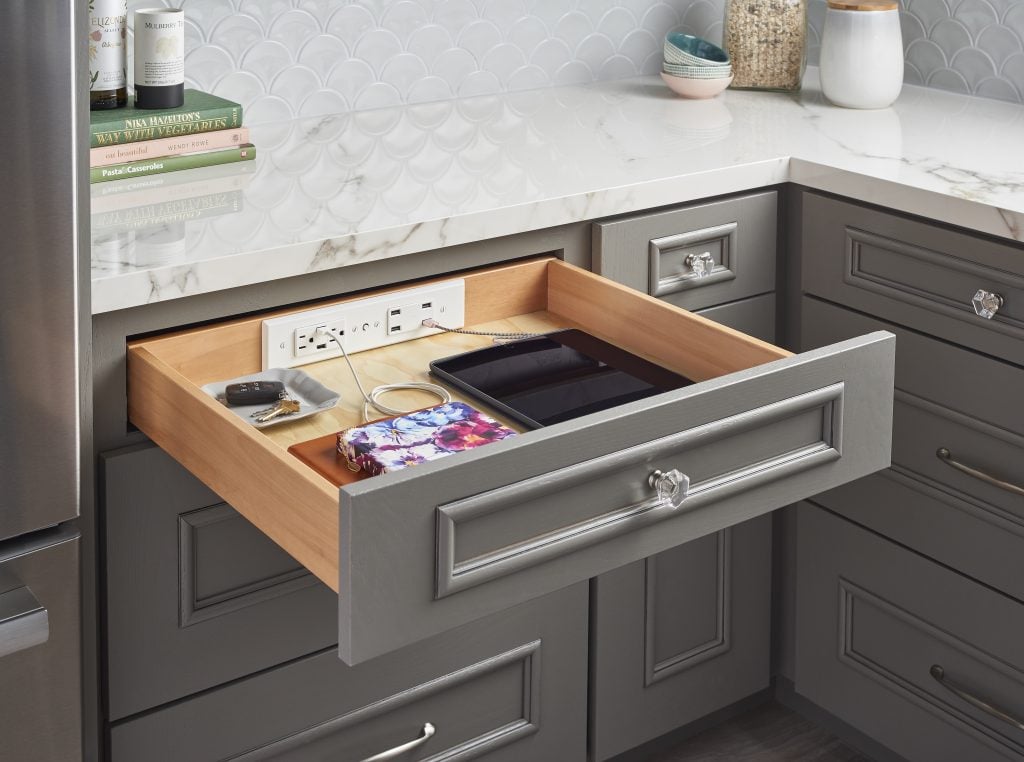
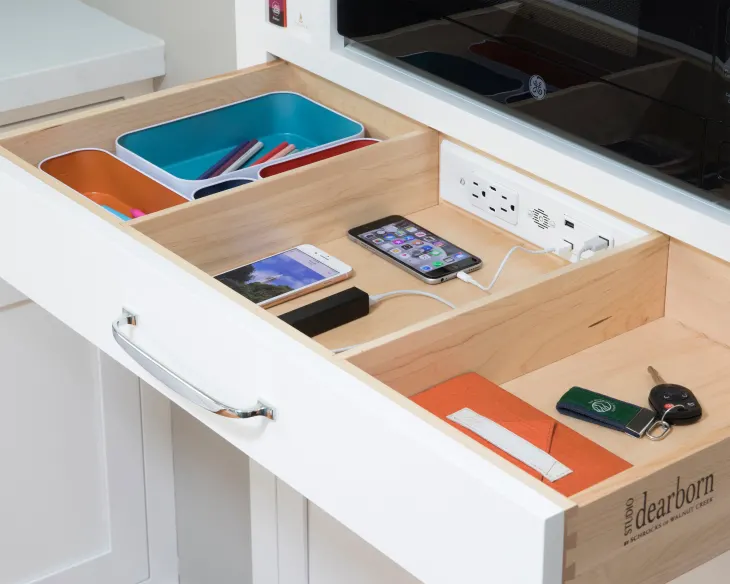
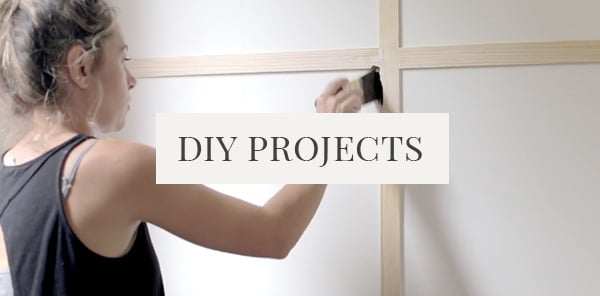
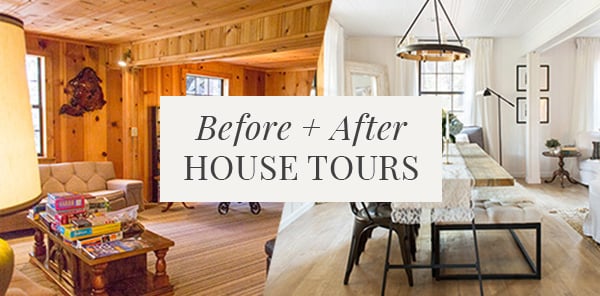


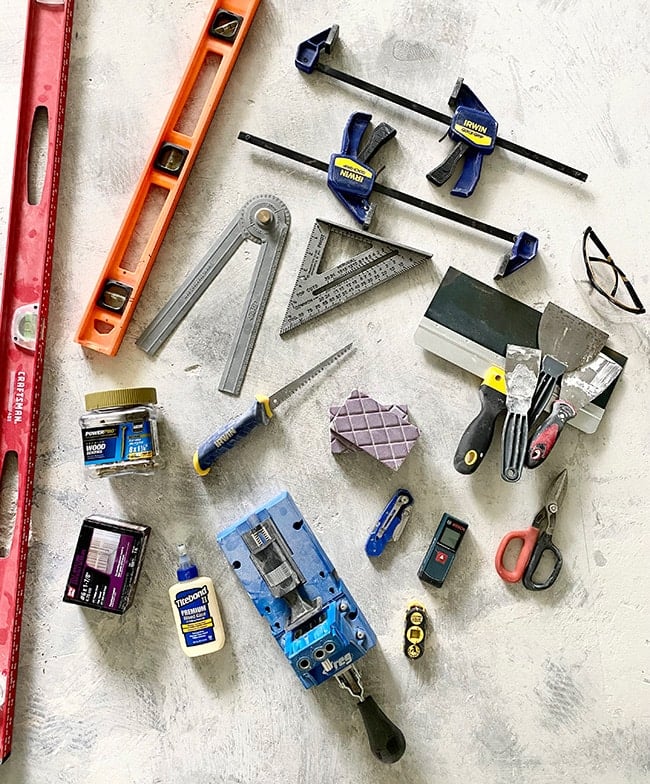
Louise says
On the other side of one of my kitchen walls is my laundry room. It has a counter with a sink in it below a small window. But the 1 ceiling light in that laundry room never provided enough light for doing anything by that sink. When renovating our kitchen and having these outlets moved, the electrician also added a new wall light and switch in my laundry room, since he was in that wall anyway moving my backsplash outlets. I really love having that light over my laundry room sink! (Should have been there when built!) It was very inexpensive to have that extra laundry room light done at the same time, so it pays to think about what is on the other side when having work done.
Louise says
When renovating our kitchen, we had the kitchen sink light switch, and the disposal switch moved to under our upper cabinets, as well as all the electric outlet boxes that were originally along the backsplash walls. We had light strips installed under our cabinets as well as on top our cabinets. The switches for those are under cabinet also. We had used expensive Italian glass tile for our backsplash and the clean look is amazing! It really bugs me to see new expensive homes with pretty backsplashes interrupted by white plastic outlets every few feet.
Laura Bervig says
Would love to know what you can do for floor heat vent covers? We have a wood look tile floor in our bathroom and would love to find a way to create a cover that matches the tile!
Jenna Sue says
I’ve never actually purchased floor covers, but I do believe I’ve seen decorative grilles before. I would just do a quick google search for floor vent covers and see what comes up!
AS says
look up the Aria cover.
Rebecca says
I did the power strips under my kitchen cabinets. I love the look. So much prettier than a bunch of outlets. I also had outlets inside one base cabinet for the toaster on a roll out drawer.
Wish we had added a couple of outlets in the master closet for a couple of charging stations.
We put outlets in our medicine cabinets for the electric toothbrushes.
Kari says
Awesome post Jenna Sue, thank you!
Kari | De Lavenne Design
charisse says
What a terrific and helpful post! Thank you. I will be keeping it handy for future reference. I knew of a few of these, but some of the newer ideas can really make a difference in the final esthetics of a room.
Jenna Sue says
I’m so glad it’s helpful, Charisse! I’m looking forward to using these ideas myself from now on 😀